I Want to Hold Your Hand: The Beatles
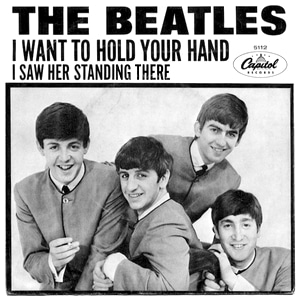 is a song by the English rock band the Beatles. Written by John Lennon and Paul McCartney, and recorded in October 1963, it was the first Beatles record to be made using four-track equipment.
is a song by the English rock band the Beatles. Written by John Lennon and Paul McCartney, and recorded in October 1963, it was the first Beatles record to be made using four-track equipment.
With advance orders exceeding one million copies in the United Kingdom, “I Want to Hold Your Hand” would have gone straight to the top of the British record charts on its day of release (29 November 1963) had it not been blocked by the group’s first million seller “She Loves You”, their previous UK single, which was having a resurgence of popularity following intense media coverage of the group. Taking two weeks to dislodge its predecessor, “I Want to Hold Your Hand” stayed at number 1 for five weeks and remained in the UK top 50 for 21 weeks in total.
It was also the group’s first American number 1 hit, entering the Billboard Hot 100 chart on 18 January 1964 at number 45 and starting the British invasion of the American music industry. By 1 February it topped the Hot 100, and stayed there for seven weeks before being replaced by “She Loves You”. It remained on the Billboard chart for 15 weeks.[5] “I Want to Hold Your Hand” became the Beatles’ best-selling single worldwide. In 2013, Billboard magazine named it the 44th biggest hit of “all-time” on the Billboard Hot 100 chart.
My Guy: Mary Wells
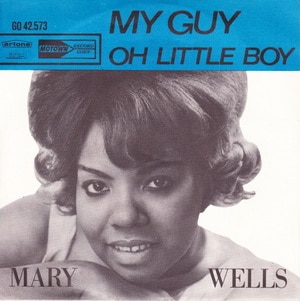 is a 1964 hit single recorded by Mary Wells for the Motown label. Written and produced by Smokey Robinson of The Miracles, the song is a woman’s dedication to the goodness of her man (“There’s not a man today who could take me away from my guy”).
is a 1964 hit single recorded by Mary Wells for the Motown label. Written and produced by Smokey Robinson of The Miracles, the song is a woman’s dedication to the goodness of her man (“There’s not a man today who could take me away from my guy”).
At the session for the “My Guy” backing track the studio musicians were having issues completing the intro: with the musicians having been playing all day and a half-hour scheduled studio time left, trombonist George Bohanon pointed out to keyboardist Earl Van Dyke that the opening measure of “Canadian Sunset” could be perfectly juxtaposed on the intro’s chord changes, and Van Dyke, the session bandleader, expediently constructed an intro incorporating the opening of “Canadian Sunset” and also the “left hand notes” from “Canadian Sunset” composer Eddie Heywood’s rendition of “Begin the Beguine”. Van Dyke would recall: “We were doing anything to get the hell out of that studio. We knew that the producers didn’t know nothing ’bout no ‘Canadian Sunset’ or ‘Begin the Beguine’. We figured the song would wind up in the trash can anyway”.
When Wells recorded her vocal she sang over the song’s outro with a huskiness evoking the line delivery of Mae West: Wells would recall: “I was only joking but the producers said ‘Keep it going, keep it going’.”
“My Guy” became the biggest hit ever for Wells, Motown’s first female star, and reached the top of the Billboard Hot 100 pop singles chart on 16 May 1964. The song led the Cashbox magazine R&B chart for seven weeks. “My Guy” was also Wells’ last hit single for Motown, except for duets she recorded with label mate Marvin Gaye. An option in her recording contract let Wells terminate the contract at her discretion after she reached her twenty-first birthday on May 13, 1964. Encouraged by her ex-husband, Wells broke her Motown contract and signed with 20th Century Fox in hopes of higher royalties and possible movie roles. However, Wells’ career never again reached the heights it had at Motown, and she never again had a hit single as big as “My Guy”.
The House of the Rising Sun: The Animals
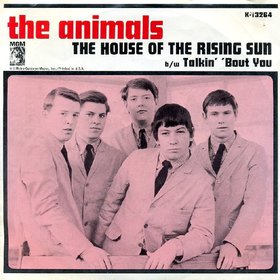 Is a traditional folk song, sometimes called “Rising Sun Blues“. It tells of a life gone wrong in New Orleans; many versions also urge a sibling to avoid the same fate. The most successful commercial version, recorded in 1964 by British rock group the Animals, was a number one hit on the UK Singles Chart and also in the United States and France. As a traditional folk song recorded by an electric rock band, it has been described as the “first folk rock hit.
Is a traditional folk song, sometimes called “Rising Sun Blues“. It tells of a life gone wrong in New Orleans; many versions also urge a sibling to avoid the same fate. The most successful commercial version, recorded in 1964 by British rock group the Animals, was a number one hit on the UK Singles Chart and also in the United States and France. As a traditional folk song recorded by an electric rock band, it has been described as the “first folk rock hit.
The Animals’ version
An interview with Eric Burdon revealed that he first heard the song in a club in Newcastle, England, where it was sung by the Northumbrian folk singer Johnny Handle. The Animals were on tour with Chuck Berry and chose it because they wanted something distinctive to sing.
The Animals’ version transposes the narrative of the song from the point of view of a woman led into a life of degradation to that of a man whose father was now a gambler and drunkard, rather than the sweetheart in earlier versions.
The Animals had begun featuring their arrangement of “House of the Rising Sun” during a joint concert tour with Chuck Berry, using it as their closing number to differentiate themselves from acts that always closed with straight rockers. It got a tremendous reaction from the audience, convincing initially reluctant producer Mickie Most that it had hit potential, and between tour stops the group went to a small recording studio on Kingsway in London to capture it.
Recording and releases
The song was recorded in just one take on May 18, 1964, and it starts with a now-famous electric guitar A minor chord arpeggio by Hilton Valentine. According to Valentine, he simply took Dylan’s chord sequence and played it as an arpeggio. The performance takes off with Burdon’s lead vocal, which has been variously described as “howling,” “soulful,” and as “…deep and gravelly as the north-east English coal town of Newcastle that spawned him.” Finally, Alan Price’s pulsating organ part (played on a Vox Continental) completes the sound. Burdon later said, “We were looking for a song that would grab people’s attention.”
As recorded, “House of the Rising Sun” ran four and a half minutes, regarded as far too long for a pop single at the time. Producer Most, who initially did not really want to record the song at all, said that on this occasion: “Everything was in the right place … It only took 15 minutes to make so I can’t take much credit for the production”. He was nonetheless now a believer and declared it a single at its full length, saying “We’re in a microgroove world now, we will release it.”
In the United States however, the original single (MGM 13264) was a 2:58 version. The MGM Golden Circle reissue (KGC 179) featured the unedited 4:29 version, although the record label gives the edited playing time of 2:58. The edited version was included on the group’s 1964 U.S. debut album The Animals, while the full version was later included on their best-selling 1966 U.S. greatest hits album, The Best of the Animals. However, the very first American release of the full-length version was on a 1965 album of various groups entitled Mickie Most Presents British Go-Go (MGM SE-4306), the cover of which, under the listing of “House of the Rising Sun”, described it as the “Original uncut version.” Americans could also hear the complete version in the movie Go Go Mania in the spring of 1965.
“House of the Rising Sun” was not included on any of the group’s British albums, but it was reissued as a single twice in subsequent decades, charting both times, reaching number 25 in 1972 and number 11 in 1982, using the famous Wittlesbach organ.
The Animals version was played in 6/8 meter, unlike the 4/4 of most earlier versions. Arranging credit went only to Alan Price. According to Burdon, this was simply because there was insufficient room to name all five band members on the record label, and Alan Price’s first name was first alphabetically. However, this meant that only Price received songwriter’s royalties for the hit, a fact that has caused bitterness ever since, especially with Valentine.
Reception
“House of the Rising Sun” was a trans-Atlantic hit: after reaching the top of the UK pop singles chart in July 1964, it topped the U.S. pop singles chart two months later, on September 5, 1964, where it stayed for three weeks, and became the first British Invasion number one unconnected with the Beatles. It was the group’s breakthrough hit in both countries and became their signature song. The song was also a hit in a number of other countries, including Ireland, where it reached No. 10 and dropped off the charts one week later.
Oh Pretty Woman: Roy Orbison
 a song recorded by Roy Orbison, written by Orbison and Bill Dees. It was released as a single in August 1964 on Monument Records and spent three weeks at number one on the Billboard Hot 100 on September 26, 1964 – the second single by Orbison to top the US charts.
a song recorded by Roy Orbison, written by Orbison and Bill Dees. It was released as a single in August 1964 on Monument Records and spent three weeks at number one on the Billboard Hot 100 on September 26, 1964 – the second single by Orbison to top the US charts.
It was also Orbison’s third single to top the UK Singles Chart (for a total of three weeks). The record ultimately sold seven million copies and marked the high point in Orbison’s career. Within months of its release, in October 1964, the single was certified gold by the RIAA. At the year’s end, Billboard ranked it the number four song of 1964.
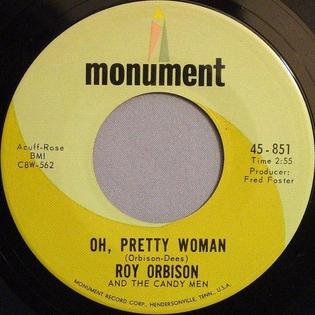 The lyrics tell the story of a man who sees a pretty woman walking by. He yearns for her and wonders if, as beautiful as she is, she might be lonely like he is. At the last minute, she turns back and joins him.
The lyrics tell the story of a man who sees a pretty woman walking by. He yearns for her and wonders if, as beautiful as she is, she might be lonely like he is. At the last minute, she turns back and joins him.
The title was inspired by Orbison’s wife, Claudette, interrupting a conversation to announce she was going out. When Orbison asked if she had enough cash, his co-writer Bill Dees interjected, “A pretty woman never needs any money.”
Orbison’s recording of the song, which used four guitars, was produced by Fred Foster.
You’ve Lost That Lovin’ Feelin’: The Righteous Brothers

is a song written by Phil Spector, Barry Mann, and Cynthia Weil. It was first recorded by the Righteous Brothers in 1964, and was produced by Phil Spector.
Their recording is considered by some music critics to be the ultimate expression and illustration of Spector’s “Wall of Sound” recording technique.
It has also been described by various music writers as “one of the best records ever made” and “the ultimate pop record”.
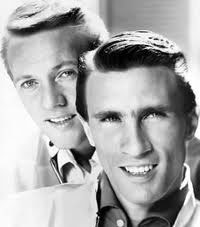 The original Righteous Brothers version was a critical and commercial success on its release, becoming a number-one hit single in both the United States and the United Kingdom in February 1965.
The original Righteous Brothers version was a critical and commercial success on its release, becoming a number-one hit single in both the United States and the United Kingdom in February 1965.
It was the fifth best selling song of 1965 in the US. It also entered the Top 10 in the UK chart on an unprecedented three separate occasion
Eight Days a Week: The Beatles
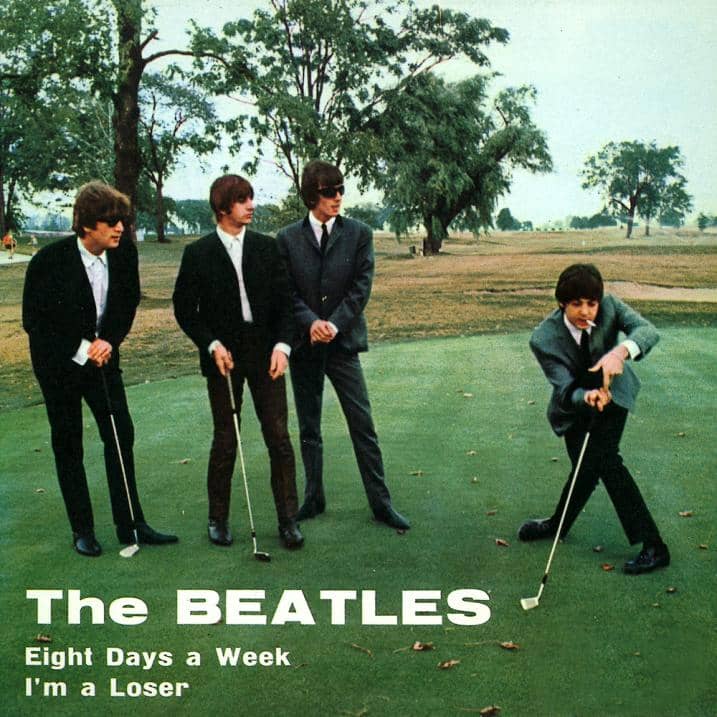 Is a song by the English rock band the Beatles. It was written by Paul McCartney and John Lennon based on McCartney’s original idea. The song was released in the United Kingdom in December 1964 on the album Beatles for Sale. In the United States, it was first issued as a single in February 1965 before appearing on the North American release Beatles VI.
Is a song by the English rock band the Beatles. It was written by Paul McCartney and John Lennon based on McCartney’s original idea. The song was released in the United Kingdom in December 1964 on the album Beatles for Sale. In the United States, it was first issued as a single in February 1965 before appearing on the North American release Beatles VI.
The song was the band’s seventh number 1 single on the Billboard Hot 100, a run of US chart success achieved in just over a year. The single was also number 1 in Canada, Belgium and the Netherlands.
The Beatles recorded “Eight Days a Week” at EMI Studios in London in October 1964. The track opens with a fade-in, marking the first time that this technique had been used on a pop studio recording. The song was reissued worldwide in 2000 on the Beatles compilation album 1. I
t also provided the title for director Ron Howard’s 2016 documentary film on the band’s years as live performers, The Beatles: Eight Days a Week.
I Hear a Symphony: The Supremes

Is a 1965 song recorded by The Supremes for the Motown label. Written and produced by Motown’s main production team, Holland–Dozier–Holland, the song became their sixth number-one pop hit on Billboard Hot 100 pop singles chart in the United States for two weeks from November 14, 1965 through November 27, 1965. On the UK pop chart, the single peaked at number thirty-nine.
Mrs. Brown You’ve Got a Lovely Daughter: Herman’s Hermits
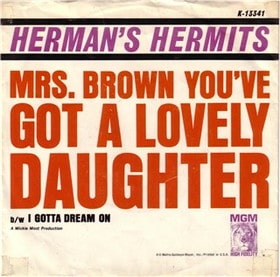
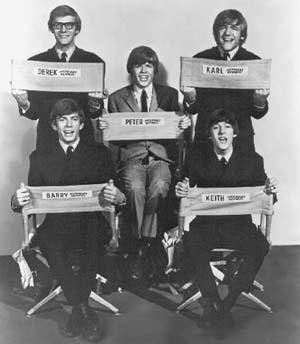
is a popular song written by British actor, screenwriter and songwriter Trevor Peacock. It was originally sung by actor Tom Courtenay in The Lads, a British TV play of 1963, and released as a single on UK Decca.
The best-known version of the song is by Herman’s Hermits, who took it to number one on the US Billboard Hot 100 in May 1965, and number one in Canada the month before. The single debuted on the Hot 100 at number 12 — the third highest debut of the decade (after the Beatles’ “Hey Jude” and “Get Back”).[3] The Hermits never released the track — or their other US 1965 number one, “I’m Henry VIII, I Am” — as a single in their native Britain. “Mrs Brown, You’ve Got a Lovely Daughter” was recorded as an afterthought in two takes and featured unique muted lead and rhythm guitar by Derek Leckenby and Keith Hopwood and heavily accented lead vocals by Peter Noone, with backing vocals from Karl Green and Keith Hopwood. The band never dreamed it would be a single let alone hit number one in the US. According to Noone the song was well known to British bands; it would often be performed at birthday parties, substituting the surname of the girl whose party was being celebrated, i.e., “Mrs. Smith” or “Mrs. Jones” instead of “Mrs. Brown”
I Can’t Help Myself: The Four Tops
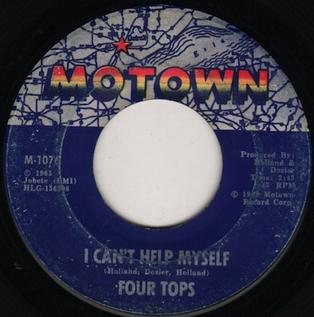
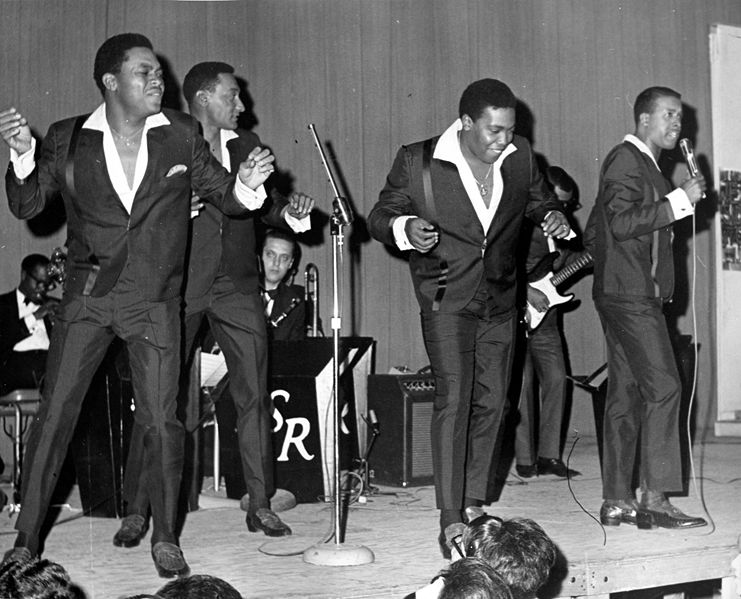
a 1965 hit song recorded by the Four Tops for the Motown label.
Written and produced by Motown’s main production team Holland–Dozier–Holland, the song is one of the most well-known Motown tunes of the 1960s. The song reached number one on the R&B charts and was also the number-one song on the Billboard Hot 100 for two non-consecutive weeks, from June 12 to June 19 and from June 26 to July 3 in 1965. It replaced “Back in My Arms Again” by labelmates The Supremes, was first replaced by “Mr. Tambourine Man” by The Byrds, then regained the top spot before being replaced by “(I Can’t Get No) Satisfaction” by The Rolling Stones. Billboard ranked the record as the No. 2 song of 1965. It was also the Four Tops first Top 40 single in the UK, reaching #23 on its original release, and a 1970 reissue peaked at #10 in the UK charts.
The song finds lead singer Levi Stubbs, assisted by the other three Tops and The Andantes, pleadingly professing his love to a woman: “Sugar pie, honey bunch/I’m weaker than a man should be!/Can’t help myself/I’m a fool in love, you see.” The melodic and chordal progressions are very similar to the Supremes’ “Where Did Our Love Go”. AllMusic critic Ed Hogan claims that the song uses the same chords as The Supremes’ 1964 hit “Where Did Our Love Go,” also written by Holland-Dozier-Holland.
(I Can’t Get No) Satisfaction: Rolling Stones
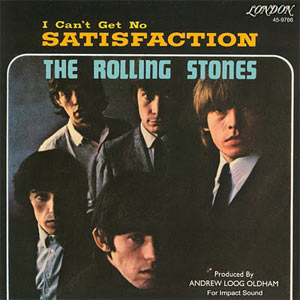
is a song by the English rock band the Rolling Stones, released in 1965. It was written by Mick Jagger and Keith Richards and produced by Andrew Loog Oldham. Richards’ three-note guitar riff—intended to be replaced by horns—opens and drives the song. The lyrics refer to sexual frustration and commercialism.
The song was first released as a single in the United States in June 1965 and was also featured on the American version of the Rolling Stones’ fourth studio album, Out of Our Heads, released that July.
“Satisfaction” was a hit, giving the Stones their first number one in the US. In the UK, the song initially was played only on pirate radio stations, because its lyrics were considered too sexually suggestive. It later became the Rolling Stones’ fourth number one in the United Kingdom.
I Got You Babe: Sonny and Cher
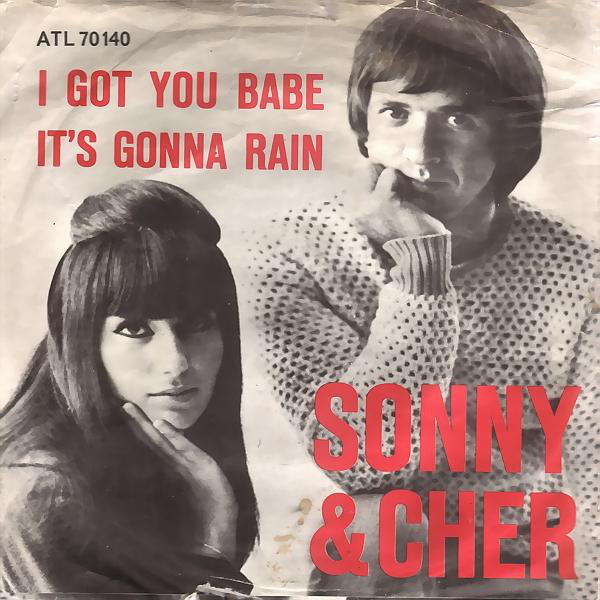
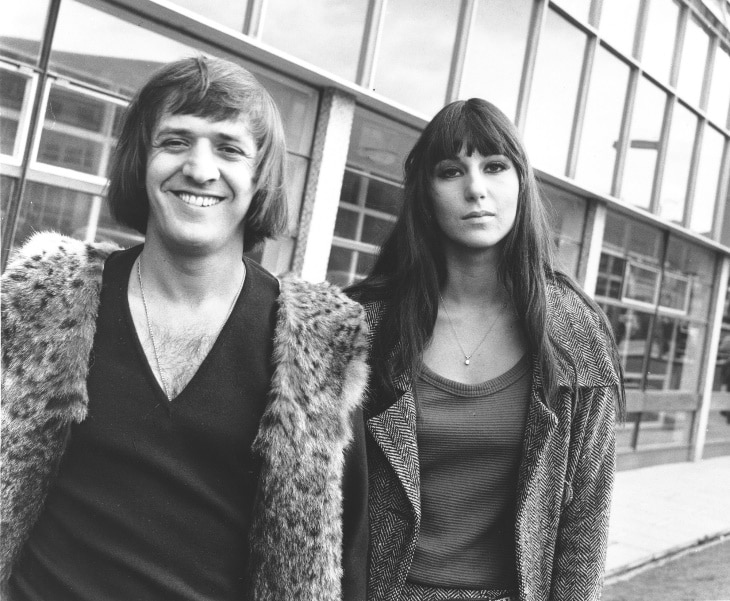
Is a song written by Sonny Bono. It was the first single taken from the debut studio album Look at Us, of the American pop music duo Sonny & Cher. In August 1965, their single spent three weeks at number 1 on the Billboard Hot 100 in the United States where it sold more than 1 million copies and was certified Gold. It also reached number 1 in the United Kingdom and Canada. In 1985, a cover version of “I Got You Babe” by British reggae/pop band UB40 featuring American singer Chrissie Hynde, peaked at number one in the UK Singles Chart and reached number 28 on the US Billboard Hot 100 chart. A 1993 version by Cher with Beavis and Butt-Head bubbled under the Hot 100 chart.
Turn Turn Turn: The Byrds
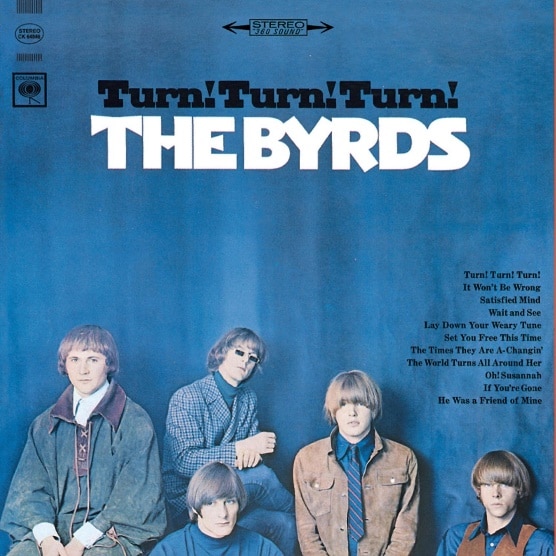 is a song written by Pete Seeger in the late 1950s. The lyrics, except for the title, which is repeated throughout the song, and the final two lines, are adapted word-for-word from the English version of the first eight verses of the third chapter of the biblical Book of Ecclesiastes. The song was originally released in 1962 as “To Everything There Is a Season” on folk group the Limeliters’ RCA album Folk Matinee and then some months later on Seeger’s own The Bitter and the Sweet.
is a song written by Pete Seeger in the late 1950s. The lyrics, except for the title, which is repeated throughout the song, and the final two lines, are adapted word-for-word from the English version of the first eight verses of the third chapter of the biblical Book of Ecclesiastes. The song was originally released in 1962 as “To Everything There Is a Season” on folk group the Limeliters’ RCA album Folk Matinee and then some months later on Seeger’s own The Bitter and the Sweet.
The song became an international hit in late 1965 when it was adapted by the American folk rock group the Byrds. The single entered the record chart at number 80 on October 23, 1965, before reaching number one on the Billboard Hot 100 chart on December 4, 1965. In Canada, it reached number three on Nov. 29, 1965, and also peaking at number 26 on the UK Singles Chart
“Turn! Turn! Turn!” was adapted by the Byrds using a folk rock arrangement. Columbia Records released it as a single on October 1, 1965, with the Gene Clark original composition “She Don’t Care About Time” as the B-side. The song is included on the band’s second album, Turn! Turn! Turn!, which was released on December 6, 1965. The Byrds’ single is the most successful recorded version of the song, having reached number one on the US Billboard Hot 100 charts and number 26 on the UK Singles Chart. The book of Ecclesiastes was written between the 3rd and 10th centuries BC, thus “Turn! Turn! Turn!” is the number one pop hit with the oldest lyrics.
The song had first been arranged by the Byrds’ lead guitarist Jim McGuinn in a chamber-folk style during sessions for Judy Collins’ 1963 album, Judy Collins 3. The idea of reviving the song came to McGuinn during the Byrds’ July 1965 tour of the American Midwest, when his future wife, Dolores, requested the tune on the Byrds’ tour bus. The rendering that McGuinn dutifully played came out sounding not like a folk song but more like a rock/folk hybrid, perfectly in keeping with the Byrds’ status as pioneers of the folk rock genre. McGuinn explained, “It was a standard folk song by that time, but I played it and it came out rock ‘n’ roll because that’s what I was programmed to do like a computer. I couldn’t do it as it was traditionally. It came out with that samba beat, and we thought it would make a good single.”
The master recording of the song reportedly took 78 takes, spread over five days of recording, to complete.
The song’s plea for peace and tolerance struck a nerve with the American record buying public as the Vietnam War escalated. The single also solidified folk rock as a chart trend and, like the band’s previous hits, continued the Byrds’ successful mix of vocal harmony and jangly twelve-string Rickenbacker guitar playing. Pete Seeger expressed his approval of the Byrds’ rendering of the song.
 During 1965 and 1966, the band performed the song on the television programs Hollywood A Go-Go, Shindig!, The Ed Sullivan Show, and Where the Action Is, as well as in the concert film, The Big T.N.T. Show. Additionally, the song would go on to become a staple of the Byrds’ live concert repertoire, until their final disbandment in 1973. The song was also performed live by a reformed line-up of the Byrds featuring Roger McGuinn, David Crosby and Chris Hillman in January 1989. In addition to its appearance on the Turn! Turn! Turn! album, the song also appears on several Byrds’ compilations, including The Byrds’ Greatest Hits, History of The Byrds, The Original Singles: 1965–1967, Volume 1, The Byrds, 20 Essential Tracks From The Boxed Set: 1965-1990, The Very Best of The Byrds, The Essential Byrds and There Is a Season.
During 1965 and 1966, the band performed the song on the television programs Hollywood A Go-Go, Shindig!, The Ed Sullivan Show, and Where the Action Is, as well as in the concert film, The Big T.N.T. Show. Additionally, the song would go on to become a staple of the Byrds’ live concert repertoire, until their final disbandment in 1973. The song was also performed live by a reformed line-up of the Byrds featuring Roger McGuinn, David Crosby and Chris Hillman in January 1989. In addition to its appearance on the Turn! Turn! Turn! album, the song also appears on several Byrds’ compilations, including The Byrds’ Greatest Hits, History of The Byrds, The Original Singles: 1965–1967, Volume 1, The Byrds, 20 Essential Tracks From The Boxed Set: 1965-1990, The Very Best of The Byrds, The Essential Byrds and There Is a Season.
The recording has been featured in numerous movies and TV shows, including 1983’s Heart Like a Wheel, 1994’s Forrest Gump and 2002’s In America. Following Joe Cocker’s cover of “With a Little Help from My Friends”, the song was the first to play on the first episode of the television series The Wonder Years. It was also used in a Wonder Years parody, during The Simpsons episode, “Three Men and a Comic Book”. In 2003, it was used in the closing sequence of the Cold Case episode “A Time to Hate” (Season One, episode 7).
We Can Work It Out: Beatles
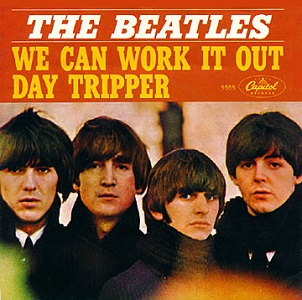
Is a song by the English rock band the Beatles, written by Paul McCartney and John Lennon. It was first issued as a double A-side single with “Day Tripper” in December 1965. The release marked the first time in Britain that both tracks on an artist’s single were promoted as joint A-sides. The song was recorded during the sessions for the band’s Rubber Soul album. The single was number 1 in Britain (where it was also the top-selling single of 1965), America, Australia, Canada and Ireland.
“We Can Work It Out” is a comparatively rare example of a Lennon–McCartney collaboration from this period in the Beatles’ career, in that it recalls the level of collaboration the two songwriters had shared when writing the group’s hit singles of 1963. This song, “A Day in the Life”, “Baby, You’re a Rich Man” and “I’ve Got a Feeling”, are among the notable exceptions.
These Boots Are Made for Walkin’: Nancy Sinatra
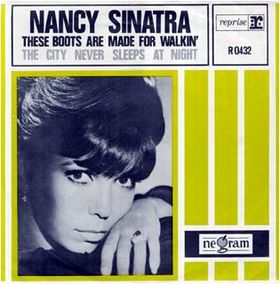
is a hit song written by Lee Hazlewood and recorded by Nancy Sinatra. It charted January 22, 1966[ and reached No. 1 in the United States Billboard Hot 100 and in the UK Singles Chart.
Nancy Sinatra was encouraged by Lee Hazlewood to sing the song as if she were “a sixteen-year-old girl who fucks truck drivers”. Sinatra’s recording of the song was made with the help of Los Angeles session musicians known as the Wrecking Crew. This session included Hal Blaine on drums, Al Casey, Tommy Tedesco, and Billy Strange on guitars, Ollie Mitchell, Roy Caton and Lew McCreary on horns, Carol Kaye on electric bass and Chuck Berghofer on double bass, providing the notable bass line. Nick Bonney was the guitarist for the Nelson Riddle Orchestra.
Monday, Monday: The Mamas and The Papas
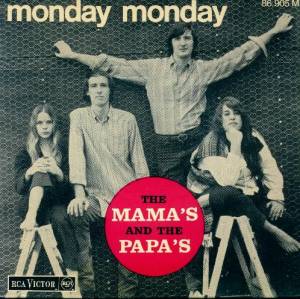
is a 1966 song written by John Phillips and recorded by the Mamas & the Papas using background instruments played by members of The Wrecking Crew for their 1966 album If You Can Believe Your Eyes and Ears. It was the group’s only #1 hit on the U.S. Billboard Hot 100.
Phillips said that he wrote the song quickly, in about 20 minutes. The song includes a false ending, when there is a pause before the coda of the song, and goes up a half note for the bridges and refrains of the song. It was the second consecutive #1 hit song in the U.S. to contain a false ending, succeeding “Good Lovin'” by the Young Rascals, and the first time this novelty had occurred between consecutive #1 hits.
On March 2, 1967, The Mamas & the Papas won a Grammy Award for Best Pop Performance by a Duo or Group with Vocal for this song.
Arguably the best live or studio version of the song was performed at the Monterey Rock Festival (California) in 1967. The performance was recorded for film at the time but not in a solo album.
Paint It Black: Rolling Stones
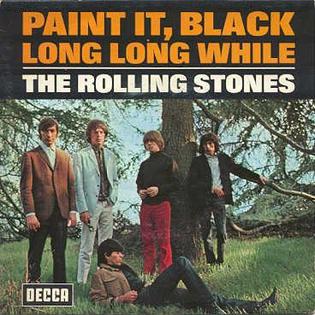
is a song by the English rock band the Rolling Stones. Jointly credited to songwriting partnership of Mick Jagger and Keith Richards, it was first released as a single on 6 May 1966 and was later included as the opening track to the US version of their 1966 album, Aftermath.
“Paint It Black” reached number one in both the Billboard Hot 100 and UK Singles Chart. The song became the Rolling Stones’ third number one hit single in the US and sixth in the UK. Since its initial release, the song has remained influential as the first number one hit featuring a sitar, particularly in the UK where it has charted in two other instances, and has been the subject of multiple cover versions, compilation albums, and film appearances.
